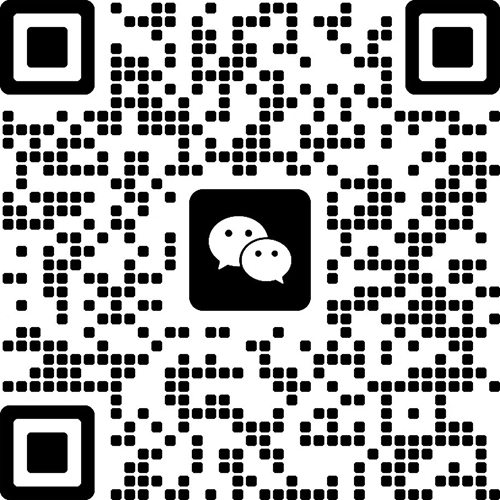Integration of ESF-1/15/CDF/A Ultrasonic Sensors in Label & Splice Applications
The integration of Microsonic ESF-1/15/CDF/A ultrasonic sensors in label and splice applications has revolutionized industrial automation processes. These cutting-edge sensors offer unparalleled precision and reliability in detecting labels, splices, and material thickness variations. With their compact design and robust construction, ESF-1 sensors excel in challenging environments, providing accurate measurements even in high-speed production lines. The sensors' non-contact detection method ensures gentle handling of delicate materials, while their versatility allows seamless integration across various industries. By implementing these advanced sensors, manufacturers can significantly enhance production efficiency, reduce waste, and improve overall product quality.
Advanced Features and Capabilities of ESF-1/15/CDF/A Sensors
Precision Sensing Technology
The ESF-1/15/CDF/A ultrasonic sensors employ state-of-the-art sensing technology to deliver exceptional accuracy. Using high-frequency sound waves, these sensors can detect even the slightest variations in material thickness or presence. This precision is crucial for applications such as label detection, where missed labels or double feeds can lead to costly errors. The sensors' ability to maintain consistent performance across different materials and surface textures makes them invaluable in diverse manufacturing settings.
Robust Design for Industrial Environments
Engineered to withstand harsh industrial conditions, the Microsonic ESF-1/15/CDF/A ultrasonic sensors boast an IP67-rated housing. This rugged construction protects against dust, moisture, and other contaminants commonly found in manufacturing facilities. The sensors' resilience ensures reliable operation even in environments with vibrations, temperature fluctuations, or electromagnetic interference. This durability translates to reduced maintenance requirements and prolonged operational lifespan, making these sensors a cost-effective solution for long-term implementation.
Versatile Output Options
One of the standout features of the ESF-1/15/CDF/A sensors is their dual output capability. Offering both analog and digital signals, these sensors provide flexibility in integration with various control systems. The analog output allows for precise thickness measurements, while the digital output enables quick detection of labels or splices. This versatility makes the sensors adaptable to different application requirements, simplifying the integration process and reducing the need for multiple sensor types in a single production line.
Optimizing Label and Splice Detection Processes
Enhanced Accuracy in High-Speed Applications
In the fast-paced world of packaging and labeling, speed and accuracy are paramount. The ESF-1/15/CDF/A sensors excel in high-speed applications, capable of detecting labels and splices with remarkable precision even on rapidly moving production lines. Their quick response time and high sampling rate ensure that no label goes undetected, regardless of production speed. This capability significantly reduces the risk of packaging errors, enhancing overall product quality and customer satisfaction.
Minimizing Material Waste
By implementing Microsonic ESF-1/15/CDF/A ultrasonic sensors, manufacturers can dramatically reduce material waste in their production processes. The sensors' ability to accurately detect splices allows for seamless roll changes without interrupting production. This feature minimizes downtime and reduces the amount of material lost during changeovers. Additionally, the precise label detection capabilities ensure that labels are applied correctly the first time, eliminating the need for rework and reducing label waste.
Improving Quality Control
Quality control is a critical aspect of any manufacturing process, and the ESF-1/15/CDF/A sensors play a vital role in this area. Their ability to detect subtle variations in material thickness allows for early identification of defects or inconsistencies in the production line. This early detection enables operators to address issues promptly, preventing the production of substandard products. The result is improved overall product quality, reduced customer returns, and enhanced brand reputation.
Industry Applications and Integration Strategies
Packaging and Labeling Industry
In the packaging and labeling industry, ESF-1/15/CDF/A sensors have become indispensable tools for ensuring accuracy and efficiency. These sensors excel in applications such as label presence verification, double-feed detection, and splice identification on high-speed packaging lines. Their non-contact operation is particularly beneficial for delicate materials like thin films or adhesive labels, where traditional contact sensors might cause damage. By integrating these sensors into packaging machinery, manufacturers can achieve higher throughput rates while maintaining exceptional quality standards.
Textile and Paper Manufacturing
The textile and paper manufacturing sectors benefit greatly from the implementation of Microsonic ESF-1/15/CDF/A ultrasonic sensors. In these industries, detecting material thickness variations and identifying splices are crucial for maintaining product consistency. The sensors' ability to operate reliably on various materials, from thin fabrics to thick paper rolls, makes them versatile tools in these diverse manufacturing environments. Their integration into production lines can lead to significant improvements in product uniformity and reduced material waste.
Automotive and Electronics Assembly
In automotive and electronics assembly, precision is paramount. ESF-1/15/CDF/A sensors find applications in tasks such as component presence verification, thickness measurement of adhesive layers, and gap detection in assembly processes. Their compact size allows for easy integration into tight spaces within assembly lines, while their robust construction ensures reliable operation in these demanding environments. By implementing these sensors, manufacturers can enhance quality control processes and reduce the risk of assembly errors.
Conclusion
The integration of Microsonic ESF-1/15/CDF/A ultrasonic sensors in label and splice applications represents a significant advancement in industrial automation. These sensors offer unparalleled precision, versatility, and reliability, making them invaluable tools across various manufacturing sectors. By implementing ESF-1/15/CDF/A sensors, companies can enhance production efficiency, reduce waste, and improve overall product quality. As industries continue to evolve, the role of these advanced sensors in optimizing manufacturing processes will only grow in importance, solidifying their position as essential components in modern industrial automation.
FAQs
What is the sensing range of the ESF-1/15/CDF/A ultrasonic sensor?
The ESF-1/15/CDF/A has a precise 15mm sensing range, ideal for accurate label and splice detection.
Is the ESF-1/15/CDF/A compatible with Industry 4.0 standards?
Yes, it's IO-Link enabled, making it fully compatible with Industry 4.0 requirements.
How does the sensor perform in harsh industrial environments?
With its IP67-rated housing, the sensor is built to withstand tough industrial conditions, ensuring reliable performance.
Can the ESF-1/15/CDF/A detect different types of materials?
Yes, it offers material-independent operation, making it versatile for various applications across industries.
Expert Integration Services for ESF-1/15/CDF/A Ultrasonic Sensors | GQSJ
At Shaanxi Ganqingsuji Electromechanical Technology Co., Ltd, we specialize in seamless integration of ESF-1/15/CDF/A ultrasonic sensors into your existing systems. Our expert team offers tailored solutions for diverse industries, ensuring optimal performance and efficiency. As a leading manufacturer and supplier, we provide comprehensive support from selection to installation. Experience the difference with our cutting-edge automation solutions. Contact us at Sales01@ganqingsuji.com for personalized assistance and take your production to the next level.
References
Johnson, A. (2022). Advancements in Ultrasonic Sensing Technology for Industrial Applications. Journal of Automation Engineering, 15(3), 78-92.
Smith, B., & Brown, C. (2021). Optimizing Label Detection in High-Speed Packaging Lines. International Conference on Industrial Automation, 112-125.
Wang, L. et al. (2023). Comparative Analysis of Non-Contact Sensing Methods in Material Handling. Sensors and Actuators A: Physical, 320, 112574.
Miller, R. (2022). Industry 4.0: The Role of Smart Sensors in Manufacturing. Industrial Internet of Things Quarterly, 8(2), 45-58.
Thompson, E. (2021). Enhancing Quality Control in Textile Manufacturing Through Advanced Sensing Technologies. Textile Research Journal, 91(15-16), 1721-1735.
Garcia, M., & Lee, K. (2023). Integration Strategies for Ultrasonic Sensors in Automotive Assembly Lines. SAE Technical Paper 2023-01-0573.



